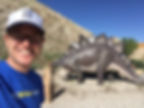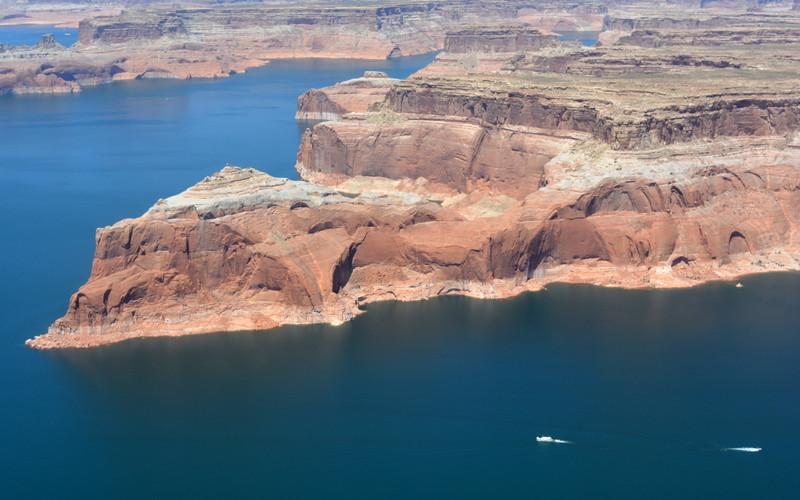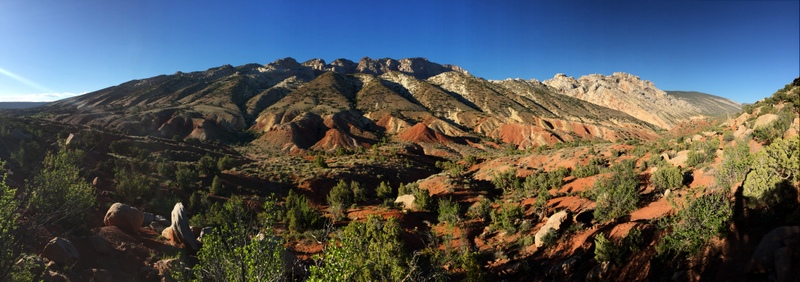Ranking All of Utah’s National Parks
- Mikah Meyer
- Sep 27, 2017
- 13 min read
“Utah is America’s most under-marketed state.”
I shared that assertion more than any other comment when asked my impression of America after a 260-day road trip to 46 North American states/provinces in 2011-2012.
Five years later, when it came time to enter Utah as part of this road trip to all 417 U.S. national parks, I was excited to better explore the state that had once wooed me with only its northeastern corner.
However, I very quickly learned it was not the “under-marketed” state of my past.
“We’ve seen a huge influx in visitors since Utah started marketing The Mighty 5 a few years ago,” a Ranger at Salt Lake City’s Timpanogos Cave National Monument commented. “The state has been so successful, that lots of people fly into Salt Lake and then stop here on their way. We’ve especially noticed the dramatic increase in international visitors, where I think the campaign has been most influential.”
Indeed this Ranger had a point. Whether it was Zion, Bryce, Capitol Reef, Canyonlands, or Arches, each of Utah’s five National Parks was inundated with foreign visitors; such that at every site I heard more non-English (particularly German) than America's primary language.

So clearly, this ad by Visit Utah has been very successful.
But that doesn’t mean they’ve solved their marketing problem.
While the state’s 5 National Parks have seen dramatic numbers of visitors (1.6 million to Arches in 2016 and 4 million to Zion), they have not shaken my “under-marketed” impression when it comes to all their 13 National Park Service sites. In fact, of all my experiences in the state, none of The Mighty 5 ranked as my top NPS site.
So while you may join the throngs of tourists succumbing to the marketing whims of a state’s tourism board, I want to make sure you get the best experience out of your Utah visit.
Thus, I’ve put together a guide to help you decide which NPS sites deserve your travel days.
A list that goes beyond the NPS title designations, and ranks every one of Utah’s NPS sites.
That way when you take your visit to the Beehive State, you won’t just apply their #LifeElevated slogan to their prescribed parks. You’ll take your knowledge of NPS sites and become:
13. Golden Spike National Historic Site
Are you into trains? If you are, you will LOVE Golden Spike National Historic Site. If you have a young kid, they will likely feel the same way. Because just behind the Visitor Center you have two real steam locomotives, pumping out into the air, and at certain times even moving in/out of position.
However, if you aren’t a train aficionado, this site may not be as exciting. The Visitor Center has a great film about the historical implications of connecting the American West via train, and the joys and competition that led to it. But apart from the film, non-train lovers will find only a few minutes’ worth of activities to make up for the 1.5-hour drive from Salt Lake City.

12. Hovenweep National Monument
There are a few parks on this list that are far off the beaten path, and Hovenweep National Monument—wedged in the southeast corner of Utah very near Four Corners—is one of them. The drive is worth it if you are particularly fond of Native American ruins, as the small valley and remaining buildings are unique from many of the other nearby Native ruins on flatter land. However, the remoteness of the site also made it difficult to get there. My van’s GPS couldn’t correctly find the site, and there was no Wi-Fi at the Visitor Center to make up for the complete lack of cell phone service.
These may seem like superficial reasons, but the process of getting to/from the park was frustrating enough that it dampened my experience at the park.
So for the sure of direction and ruins-invested park visitor, Hovenweep is a great addition. For a park visitor less enthused by ruins—in a region full of NPS sites highlighting them—consider spending your time at Shiprock or some of the area's nearby, more easily accessible sites.

11. Capitol Reef National Park
The first of my Mighty 5 National Parks to be listed lower than a “not National Park.”
It’s not that Capitol Reef wasn’t beautiful or interesting. In fact, if anything, this ancient seabed suffers only from being surrounded by the magnificence of Utah’s other NPS sites.
But the problem for Capitol Reef National Park is that it doesn’t have a “thing.” Arches has arches. Canyonlands has canyons. Bryce the hoodoos and Zion the valley, but when people asked me about visiting Capitol Reef, all I could say was, “It’s one of the Mighty 5.”
In our world of "5-Dollar Footlongs" and oversaturated options, it doesn’t pack the punch that the other upcoming parks did.
Though that lack of a distinguishing feature did allow me to focus more on how I could make the photos interesting…
10. Timpanogos Cave National Monument
Pronounced Tim-pa-no-gus, as the locals corrected me, Timpanogos Cave National Monument is a very special park in that it is so accessible to a large amount of people.
Viewable from a moderately strenuous trail leading to the cave’s entrance is Utah county and the greater Salt Lake City area that makes up Utah’s largest population center.

But that view of the city is about all you experience of urbanity. Just a short drive into the mountains east of Provo and you are in a new world, far from the traffic and noise of the city.
Taking you even further into a new world is the Timpanogos Cave. While other caves I’ve been to have been spectacular because of their size, it is Timpanogos’ details that make it so special. Nowhere else have I been able to get so physically close to unique cave creations. And the smaller size of the cave allows for tours to be focused on intricate geologic wonders instead of the discovery/size narratives that dominate other caves like Carlsbad Caverns National Park.

9. Natural Bridges National Monument
Arches National Park might be the best known of Utah’s parks producing rock arches, but Natural Bridges National Monument should not be cast aside. The size of these arches were larger than most I experienced in Arches NP, and the visitor experience was greater because it wasn’t crowded like Arches.
While you can hike down to the base of each natural bridge, I recommend doing the hike that circumnavigates the creek that once eroded these massive rock structures.
However, I would also recommend doing the scenic drive and overlooks from the top of the canyon, as often the scale of these natural bridges can’t be seen from below.

An added benefit is having to pass through the hotly contested—and beautiful--Bears Ears National Monument en route to/from Natural Bridges.

8. Cedar Breaks National Monument
I don’t want to give too much away, because much of my analysis of Cedar Breaks National Monument has to do with Bryce Canyon National Park (further down this list), but I can say:
Cedar Breaks is like Bryce Canyon with snow.
Located above 10,000 feet, a solid 1,000 feet above Bryce Canyon, the park is so snow-ridden that it doesn’t even typically open until after Memorial Day.
However, the benefit to that height is that even if you visit Utah in summer, as so many do, you’ll still have the chance to see hoodoos covered in brilliantly shining snow.
An easy stop if you want a civilization break in Cedar City or St. George, Utah, consider adding Cedar Breaks as part of your drive between Bryce Canyon and Zion National Parks.

7. Canyonlands National Park
I have to admit, when I first heard of this park, I thought, “OK, so basically a mini-Grand Canyon…”
But boy was I wrong.
In fact, I’d say the canyon views were more beautiful than what I saw at the Grand Canyon.
Now, to be fair, I was at Canyonlands National Park’s Island in the Sky district at sunset, racing from overlook to overlook to get the best views. Whereas I’ve thus far only done the North Rim of the Grand Canyon, and that was at mid-day with harsh high sun lighting.
But all that’s to say that Canyonlands was much more than a “mini-Grand Canyon.” It’s canyon views were distinct and gorgeous and worthy to not be bypassed for something with a Grand-er name.
6. Arches National Park
Before starting this journey to all 417 National Park Service sites, I had only been to 10 National Parks.
One of them was Arches.
In my word-of-mouth decision on which parks to visit during the blue-lined map at the top of this page, Arches National Park had somehow found its way to me.
Maybe it’s because it’s by the newly fashionable Moab, Utah, but it also could have something to do with the fact that it has an astoundingly large amount of arches—over 2,000! While other parks might have a few arches, Arches National Park almost turns into a “Oh, another arch…” park.
...except some of its arches are so stunning, one couldn’t help but take notice.
I took notice back in 2012, as you might recognize this below panorama of Delicate Arch from the signature of all my email newsletters (sign up at the bottom of this page).
The Salt Lake Tribune also took notice, choosing to use this photo of me at Delicate Arch with a rainbow flag as the lead for their article about my time in Utah. Of all the states I’ve been to thus far, I’m perhaps most proud of getting newspaper coverage from Salt Lake City, St. George, Moab, and Provo, Utah. In a state with higher-than-average LGBT suicides, often attributed to a primarily LDS society with particularly condemning views of non-heterosexuality, each of these newspapers mentioned that I was gay and Christian, and that I was using the media attention from this world record to try and help LGBT kids and LGBT Christians know they are normal and loved. If you’d like to donate as I continue to share this message of hope through the 300+ interviews I’ve done and continue to do across America--and in countries like Iran, Indonesia, and Azerbaijan through my Voice of America media partnership in 47 languages, you can click here to make a tax-deductible donation.
5. Rainbow Bridge National Monument
Speaking of the advocacy I’ve been doing for LGBT people in the parks, one of my missions has been to take pictures with a rainbow flag in some of the National Park Service’s most iconic locations. This way I can help the NPS with their goal of showing the LGBT community they are both safe and wanted in the parks.
While sometimes this can lead to awkward conversations, such as the gentleman in Big Bend National Park who asked me what the flag meant, then grunted and walked away after I explained. But it can also lead to awesome moments like at Rainbow Bridge National Monument, where I couldn’t think of any NPS site more perfect for a picture with the rainbow flag!

And speaking of icons in the parks, it is said that President Theodore Roosevelt traveled to Rainbow Bridge before it was federally protected. He couldn’t take the beautiful boat tour I was able to do through Lake Powell Resorts, but instead had to ride a horse to reach the world’s allegedly largest natural bridge (apparently there’s one in China that contests this). Upon arriving to the bridge, Roosevelt noted that his Native guides walked around it, while--set free of their guide--he and his horse traveled underneath it. Today, visitors are asked not to walk under the Bridge, and that’s because it’s a sacred site to the local Native Americans who believe it’s a portal to another world.
While viewing the Rainbow Bridge is an impressive moment, the park ranks high in this list especially due to the boat ride on Lake Powell. Whether traveling through the tight slot canyons or taking in the stark beauty of the juxtaposed water/desert landscape, it was getting to be on the clean waters of Lake Powell that made this site such a treat.

4. Zion National Park

No ranking on this list will probably make people scoff more than this one. Hearing descriptions of the park ranging from “the most beautiful place on earth” to “what the Garden of Eden must have been like,” I too had expectations this would be my favorite site in Utah…if not the entire National Park System.
And Zion National Park was magical. Its lush green valley in stark contrast to the high canyon walls. Its special hikes like Angels Landing (not nearly as scary as people say), the Narrows, and the Subway. And the grandeur nature of its many peaks named for some of the Bible's most famous figures. The park's name even translates as “Jerusalem.”
It is an epic park. There is no doubt of that.
But for me, it didn’t produce the awesome moments of inner stirring and involuntary outward exclamation the way the remaining three parks did. That’s why it’s number 4 on this list. But that ranking shouldn’t diminish your desire to see it. It truly is an epic park, one of the gems of the Park Service, one that was worthy of the U.S. National Anthem…
While traversing through the backcountry with a hiking club from St. George, they heard about the singing I had just done for New Promise Lutheran the past Sunday. They asked me to sing something at the top of the canyon walls, and this seemed the most appropriate. None of us expected the echo that traveled across the park, bouncing from peak to peak as it made its way toward the entrance.
My "Hiking Zion" video summary created with the Voice of America. Watch the more complete Zion summary below (#2) as part of my Southwest Utah video.
3. Glen Canyon National Recreation Area
My first exposure with Glen Canyon National Recreation Area came not from any outdoors publication or tourist brochure, but a teenage viewing of Britney Spears' music video "I'm Not A Girl, Not Yet A Woman,"
Apart from these thoughts dominating my viewing of the music video...
"What if she falls off the edge? There's no rope attached to her ankles or anything!"
My other major reaction was:
"What is this magical place?"
The sweeping views of Lake Powell and intimate journey through Antelope Canyon were some of the most striking natural landscapes my prairie-raised eyes had seen.
Nearly 20 years later, I got to experience the same vistas Britney pensively stared upon, and am happy to report they were just as spectacular in real life.
Whether the narrow waterways of the slot canyons, the radiant blue shine of Lake Powell, the stark contrast of clean water on dry desert rock, or the wavy rocks of the shore, Glen Canyon's largest body of water was like dessert for my eyes that had been feasting on natural wonders for the past year.

But even beyond Lake Powell, Glen Canyon NRA offers other iconic views, such as the Glen Canyon Dam, Horseshoe Bend--the portion of the Colorado River just southwest of the dam, which bends into its namesake shape--and the nearby Upper and Lower Antelope Slot Canyons, which are operated by the Navajo Nation, however, are a must-include for any visit to the Page, Arizona and Glen Canyon area.

Horseshoe Bend
The below photo galleries were made possible thanks to tours with the following operators:
Sky high views of Glen Canyon Dam, Lake Powell, and Horseshoe Bend via American Aviation's airplane tour.
Up close view of Horseshoe Bend and an epic landing on Tower Butte with Grand Canyon Airlines Helicopter Tours.
A unique opportunity to get photos of Upper Antelope Canyon via Chief Tsosi's Antelope Slot Canyon Tours small photography group of 7, rather than the cattle-call groups of 50 from most operators.
2. Bryce Canyon National Park
"10. This is a 10 park," you can hear me say in the below video, referencing my ranking of all NPS parks on a scale of 1 - 10 and the overwhelming reaction I had to viewing Bryce Canyon National Park at sunset for the first time.
But the National Park is far more than just that one sunset view...it's many vistas, spread throughout the park's overlooks and hikes. Whether Fairyland Canyon, Sunrise and Sunset Points, or Bryce Point, visitors can stand in awe at the expanse of hoodoos seemingly jutting out the ground.
And that's what makes this place so unique. It's not just one, two, or three hoodoos, like you’ll see across Utah...it’s thousands!
The Voice of America and I have been collaborating to make videos of my park visits, and it's apparent that many park visitors know how special Bryce Canyon is. For after posting this below video on my Facebook page (summarizing Bryce Canyon and Zion), it became my most viewed video of all time.
1. Dinosaur National Monument
Dinosaur National Monument really epitomizes this journey's goal of looking beyond the 59 National Parks.
Dinosaur is a fairly unknown park, what with it being on the border of Utah/Colorado near Wyoming, and in the literal center of a circle of interstates that go nowhere near it. In short, it's out of sight--so out of mind--for most visitors. And its designation as a Monument doesn't help sway someone to make the drive far from any major city.
However, Dinosaur offers essentially the entire National Park System all within one site. It has rivers, canyons, twisted rock formations, large plateaus, petroglyphs, rolling hills, and snowcapped mountains.
Oh yeah...and DINOSAURS!

All within one park you have nearly any natural activity you could get at another NPS site, plus a Visitor Center and exhibit hall that allow travelers to see a massive wall of bones--coupled with models that recreate these bones as they'd look in a dinosaur.

But even as it's a haven for those interested in paleontology, the dinosaur exhibit is the least exciting thing about the park.
When I initially planned my visit, I set aside only one day. Soon after entering the park, I knew that wasn't long enough. The views from the Colorado entrance of this dual-state park, and its drivable Utah section, were so incredible, and so unexpected, that I wished I had more time.
As I stood at the top of a ridgeline hike, I looked down and saw rafts tied-up to a small sandy beach. Upon realizing that guided commercial trips became available after Memorial Day (a few weeks after my visit), exploring the river/canyon portion of Dinosaur became chief on my list.
A few months later, I drove 10 hours out of my way to take a 4-day, 3-night journey down 44 miles of the Green River. With Holiday River Expeditions, I tackled Dinosaur's waters in what I called the "Goldilocks" of rafts. Not so big that they make the rapids of no danger, but not so small that I'd need to be prepared to flip and swim through each one.
With a guide paddling the 4-5 seater, I set off to explore the incredible rock formations I'd once seen from above.
While the geology of Dinosaur was indeed spectacular up close, and the food, service, and expertise of Holiday made it a very cozy way to experience the water and rocks, the most unexpected event happened early into my trip...
Thus, I give you the saga of George The Goose. Watch both the Voice of America summary, and my own 60-second explanation of the magic that happened on the Green River.
So while I can't guarantee that a wild Canadian goose will follow your journey into Dinosaur, I can state that after experiencing every National Park Service in Utah, Dinosaur National Monument was my favorite. And if there's one place you should #FindYourPark on a Utah visit, it's this one...
Want more pictures of all these sites? See them now on my Instagram page @MikahMey
Below are the park numbers included in this blog. Donate via the link below to help me continue sharing all 400+ sites.
#155 - Natural Bridges National Monument #156 - Hovenweep National Monument #160 - Dinosaur National Monument #162 - Golden Spike National Historic Site #168 - Timpanogos Cave National Monument #169 - Arches National Park #170 - Canyonlands National Park #171 - Capitol Reef National Park #172 - Bryce Canyon National Park #173 - Cedar Breaks National Monument #174 - Zion National Park #177 - Glen Canyon National Recreation Area #178 - Rainbow Bridge National Monument














































































